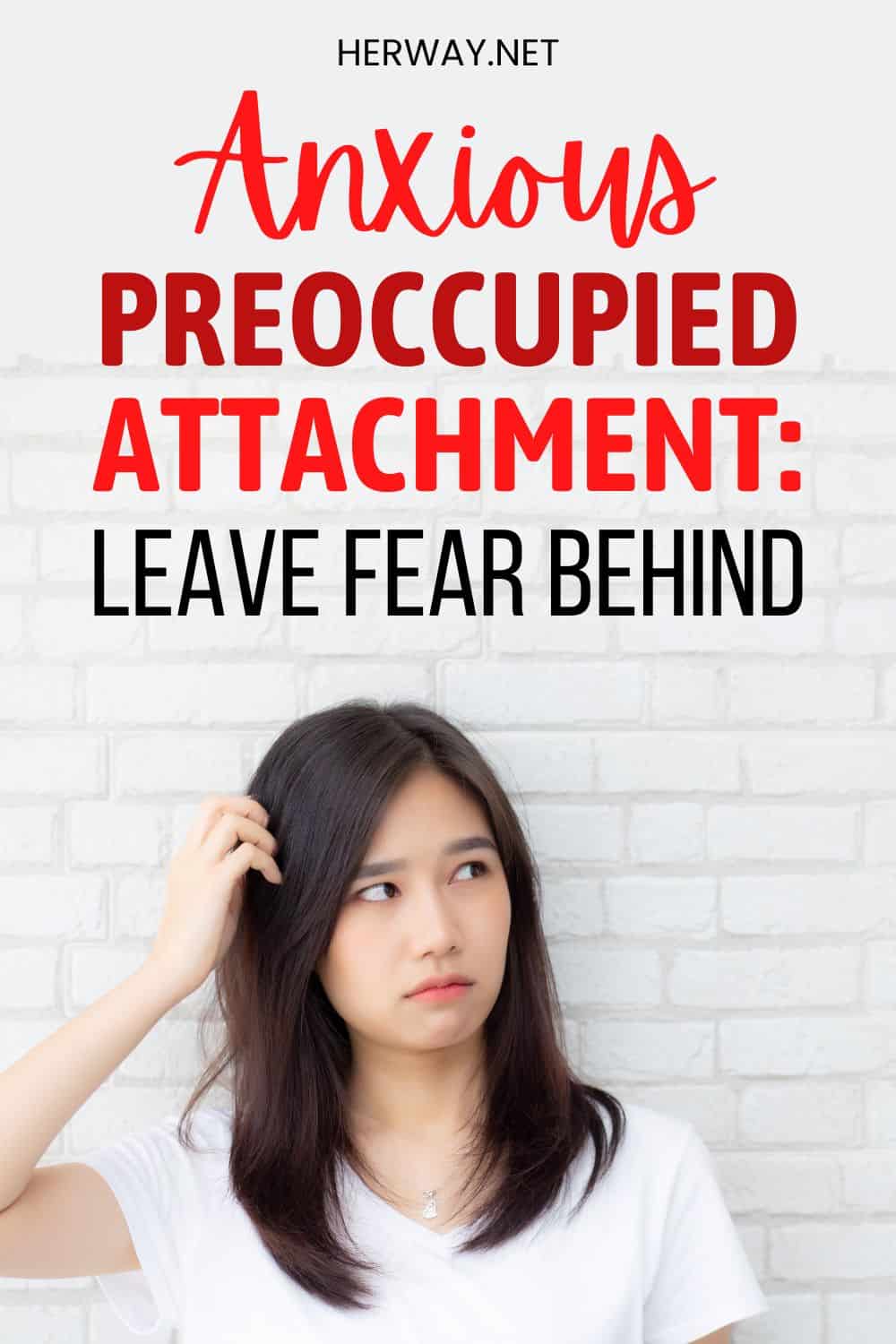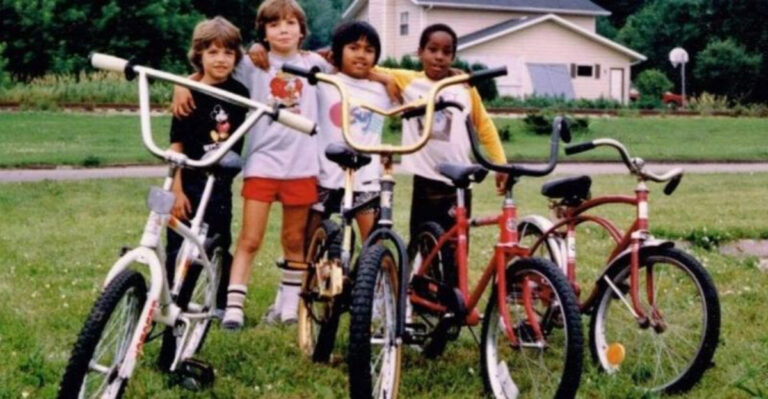Anxious Preoccupied Attachment: Overcome The Insecurity
People with a secure attachment style are capable of building healthy relationships that provide support, affection, and companionship. They can understand their own and their partner’s feelings, and they’re capable of deep emotional connections.
Those with an anxious preoccupied attachment style have trouble dealing with their deep-seated fear of rejection and worry a great deal about their relationships. Fear of abandonment and difficulty trusting their partner regardless of their actions leaves them in a constant state of anxiety.
These insecurities cause anger, often redirected inwards, or clingy, needy, and jealous behavior. Overwhelming their partner and desperately trying to keep them close can have the opposite effect and push them away.
However, attachment styles can be changed. Working towards secure attachment will take time, but every step of the way will make relationships healthier and easier.
Anxious Preoccupied Attachment
Anxious preoccupied attachment is an insecure attachment style that can often be traced back to inconsistent, emotionally distant, or intrusive caregivers during childhood. Parents who are at times caring and attentive and emotionally unavailable or critical at other times make the child feel confused.
The child doesn’t know what to expect and how they’re supposed to behave. When the child develops an anxious attachment style, they might act clingy and whiny as they try to have their emotional needs met by their caregiver.
The insecurities and behaviors shown as a child continue into adulthood. An adult with an anxious preoccupied attachment needs constant attention and reassurance from their partner. They’re constantly worried about being abandoned and have trouble trusting others.
Anxious preoccupied attachment traits
An anxious person has a hard time controlling their feelings, so they’re at risk for anxiety disorders, such as social anxiety or panic attacks. For this reason, psychotherapy can be useful when dealing with an anxious preoccupied attachment style.
Someone with anxiety might not be aware that how they feel and act in relationships is related to having an anxious preoccupied attachment style. These are some of the most common signs:
1. Low self-worth

If your attachment style stems from your childhood experiences, your low self-worth probably comes from the same source.
As a child, you depended on your parents to provide comfort and meet your needs, but when they didn’t, you didn’t know why they weren’t there for you. As you became more cognizant, this developed into a distorted belief that it was because you weren’t good enough.
2. Fear of rejection and abandonment
You constantly feel anxiety about the possibility that your partner might reject and leave you at any moment. When you were a child, if your parents left, you wouldn’t have a way of meeting your basic needs, so you developed a strong fear of being left alone. This is why you become distressed when your partner is away from you.
3. Difficulty trusting others
You’re always waiting for the other shoe to drop, and you never trust others not to hurt you. This is caused by the unpredictable behavior of your caregivers as a child and your inability to rely on them, so as an adult, you find it very difficult to have confidence that another person will be there when you need them.
4. Strong need to fit in
Low self-worth is the cause of the need to be liked and to fit in. Your fear of rejection isn’t limited to your romantic relationships – you want to be liked and accepted by everyone. You feel that if people consider you likable and to be one of them, they’ll stay instead of abandoning you.
5. Feelings of insecurity
People with insecure attachment styles believe that relationships will turn out a certain way, and they look for partners who will prove those assumptions. For example, you might choose someone with an avoidant attachment style who will constantly pull back from you and prove your belief that you aren’t worthy of love, especially as you try to draw them close.
6. Need for constant reassurance
You need your loved ones to constantly assure you of their feelings, or you start to believe that they don’t care for you.
When you were a child, your parents sometimes were there for you and met your emotional needs, but at times, they were unavailable when you needed them. Because they were so inconsistent and you never knew what to expect, now you need to be reminded that you are loved.
7. Need for approval from other people

Because of your low self-esteem and insecurity, you don’t believe in yourself and your own worth, so you need external validation. You only feel good about yourself if someone else tells you you’re good enough. These doubts make you needy and clingy, which can sometimes have the opposite result to the one you’re looking for.
8. Need to please others
Anxious attachment is characterized by having a negative view of yourself while having a positive view of others. This is one of the reasons you strive to please others and make them like you. You feel like it’s impossible to be liked for who you are – you feel like you have to earn it and deserve it.
9. Excessive demands for closeness and time from partner
You want your partner to always be around because you fear that the moment they’re out of your sight, they’re going to leave you completely.
Even if you know that this is only caused by your insecurities, it can be hard to stop feeling like this and to stop yourself from behaving in a controlling or needy way. This behavior can easily overwhelm your partner and push them away.
10. Depending on the partner
When you’re involved in an intimate relationship, you quickly become dependent on your partner to provide for your needs. You feel like you’re giving it your all when it comes to relationships.
Even though you believe it’s unconditional love you’re giving your partner, you’re really making them feel responsible for your well-being. This can easily turn your relationship into drama, conflict, and unhappiness.
11. Hyper-attentive to others’ moods and actions
You focus on other people to the point that you lose view of yourself. You prioritize thinking about other people’s feelings over your own.
Because you’re constantly anxious about how your partner feels about you, you over-analyze their every move in case there’s something behind it. A constant fear of rejection makes you respond to their feelings and moods regardless if they have anything to do with you.
12. Being emotional and moody
Your feelings are intense, but you don’t know how to handle them. When you feel the need to be close to your partner, instead of clearly letting them know what you want them to do, you make them feel responsible for how you feel. You do this by criticizing, complaining, shouting, crying, or being passive-aggressive.
When your partner doesn’t respond how you want them to, your mood changes for the worse.
13. Jealousy
Fear of being abandoned by your partner makes you hypervigilant about their feelings and behavior, especially the possibility that they might leave you for someone else. You feel suspicious often, and in situations that trigger your jealousy, you feel anger and hurt deeply.
Your feelings of jealousy sometimes escalate until you start to spy on your partner, looking for signs that they’re unfaithful.
14. Unhealthy coping mechanisms

Anxiety and anxious attachment can lead to unhealthy coping mechanisms, including substance abuse to stop yourself from focusing on your feelings, eating disorders to feel like you have control over your life, or spending too much to feel temporary satisfaction.
The problem with these coping mechanisms is that while they make you feel better about yourself for a moment, they have long-term negative consequences on other areas of your life.
*
Did you recognize yourself in some of these? This attachment style is common and may vary in degree, so not all of these traits would apply to everyone.
The main feature of the anxious attachment style is the desperate need not to be alone, accompanied by trust issues. You constantly experience attachment anxiety and the fear that your partner might reject and abandon you.
If you worry for no reason about your partner walking out on you, it’s likely a sign of an anxious attachment style.
Anxious preoccupied attachment in relationships
In a relationship, the anxious partner often feels like everything is a sign that their partner is about to leave them, such as not answering the phone or being late.
Someone with anxious attachment always feels like they are the one who loves more in the relationship. They become obsessed with their partner and the relationship and prioritize their partner’s needs over their own.
Their behavior can be overwhelming: they’re clingy and needy, they try to control their partner’s behavior by using emotional manipulation such as crying or being passive-aggressive, and they can be overly jealous.
The relationship can be very stressful for both people because of the intense and unstable emotions that someone who is anxiously attached feels. Instead of letting their partner know how they feel and what they need, they behave in ways supposed to get their partner to respond by meeting their needs.
Conflicts are especially challenging because the anxiously attached person starts them easily due to their insecurities and refuses to end them until they feel assured.
Overcoming An Anxious Attachment Style
Attachment style isn’t set in stone – with effort, you can learn to regulate your feelings and respond to your partner’s feelings and actions in a healthy way. Working on overcoming your attachment style helps you feel more secure in relationships and on your own.
Your relationships will improve when you start believing that you don’t need others to make you happy and meet your emotional needs. Once you develop your ability to build trust and aren’t anxious about your relationship, you’ll be able to stop focusing on your partner and instead develop interests of your own.
1. Therapy

Anxious preoccupied attachment style isn’t a mental health disorder. Nevertheless, therapy can be useful in helping you deal with the problems it causes you. Talking to a counselor is helpful in managing your attachment style, but it’s especially useful if you also have other anxiety or mental health issues.
Therapy is hard: you must face yourself, and there’s nothing scarier than that. Still, if you’re determined to improve your life and mental health, consider talking to a therapist and putting in the work needed to do so.
2. Understanding your attachment style
You have some idea where your separation anxiety comes from, but reading up on your attachment style or discussing it with your therapist is very useful. When you know that some behaviors you thought were just the way you are, are caused by your attachment style, it becomes easier to change because you start to see them as something undesirable.
3. Mindfulness
When you’re feeling anxious or fearful, stop for a moment and take in your surroundings. Let yourself feel, but don’t let those feelings control you. Being able to detach your judgment from these feelings will help you stop yourself from behaviors those feelings usually cause.
4. Communication
Developing your communication skills will influence how you experience and express your feelings to others. Learn to express your needs clearly instead of using unhealthy methods to have them met. This will help with conflicts and misunderstandings.
5. Focus on yourself
Instead of constant anxiety about where your partner is and what they’re doing, shift focus to yourself and do things to avoid obsessing about your relationship. If you’re sitting around worrying about someone else, you can’t focus on understanding how you feel.
6. Accept and express your feelings
Your feelings are valid, even if you don’t like them. It’s okay to feel however you feel. When you keep your emotions inside, they control you. Don’t bottle up your feelings. Instead, find an outlet that will help you process them. Try openly and honestly talking to others, journaling, doing something creative, or meditating.
RELATED: 18 Emotional Self-Care Tips & 9 Activities To Gain Inner Peace
Helping Someone With An Anxious Preoccupied Attachment Style

A relationship with someone with an anxious attachment style can be difficult, but if you want to help them, there are ways to do so. If both of you work on making your attachment styles secure, a healthy long-term relationship is possible.
1. Learn about attachment styles
Start by familiarizing yourself with your partner’s attachment style and what it looks like in relationships. You’ll probably recognize some of your partner’s behaviors and be able to better understand why they do certain things.
2. Use boundaries
Help your partner by gently yet firmly setting boundaries with them. Anxious attachment style is characterized by a need to never separate from the other person, so it’s important to work on overcoming this by helping your partner feel confident that boundaries don’t mean a lack of feelings or abandonment.
3. Build trust
Always follow up on your promises and be consistent. It’s important that your partner accepts that they can rely on you because their attachment style was caused by their inability to rely on their parents during childhood. You can do this by always being there for them and showing up.
4. Make them feel secure
Your partner constantly needs assurance about how you feel about them. Make sure you give them sufficient attention and you’re clear about periods when you’ll be unavailable so that they know you have other things to do and haven’t abandoned them.
5. Try couples therapy
Seeing a mental health professional isn’t necessary for someone with an anxious preoccupied attachment style, but it’s recommended if you want to deal with the issues it causes faster and more easily. It’s even more helpful if you include couples therapy as well. A therapist will help you understand and address the issues you’re facing.
What Is Attachment Theory?

Attachment theory was proposed by psychiatrist John Bowlby who examined the relationships of babies with their caregivers and the effect of those relationships on the child’s mental health.
He found that, depending on the caregiver’s behavior, attachment patterns develop in the way the child relates to the caregiver – the child learns what to expect and reacts to it in a certain way.
Mary Ainsworth, a developmental psychologist, used an experiment called the Strange Situation Procedure in which she separated young children from their caregivers to observe their behavior.
Depending on whether their primary caregiver was available when the child needed them, the child developed either the secure attachment style or one of three insecure attachment styles.
Children’s relationships with their parents greatly affect adult relationships, so attachment styles acquired in early childhood continue into adulthood, affecting attachment to romantic partners in adult romantic relationships. The type of attachment style influences the type of partners they choose and their behavior in relationships.
There are four adult attachment styles that can develop during childhood or as a response to other experiences: secure attachment style and three insecure attachment styles.
Secure attachment style
1. Secure attachment
• Secure attachment in children develops when the child can trust their caregiver to be there and meet their needs. It’s a result of positive childhood experiences and a close relationship with a caregiver.
• Adults with a secure attachment style are easily capable of healthy relationships. They understand their feelings and needs and have no trouble expressing them. Connecting with their partners is easy for them.
Insecure attachment styles
2. Avoidant attachment style
• Children develop this attachment style as a response to being rejected by their caregiver. If the caregiver repeatedly fails to meet their needs, the child starts to ignore them to hide their distress.
• The dismissive-avoidant attachment style in adults causes low self-esteem and fear of rejection, but the adult who is hidden behind emotional distance appears self-sufficient and believes they don’t need anyone.
3. Anxious attachment style
• Called anxious-ambivalent attachment in children, this attachment style is a response to inconsistent parenting. The child can’t rely on their caregiver to respond to the child’s needs, so they try to make them respond using anger or by being passive.
• Adults with the anxious attachment style have low self-esteem and fear of abandonment similar to avoidant adults, but unlike them, they seek validation in relationships. They worry they’re not good enough for their partners and react with clinginess and dependent behavior.
4. Disorganized attachment style
• This attachment style is called fearful-avoidant attachment style in children, and it’s related to traumatic experiences and abuse. Having an unpredictable or abusive caregiver who makes the child afraid instead of providing comfort causes the child to lose trust while still needing closeness.
• Adults with the disorganized fearful avoidant attachment style crave deep emotional connections, but because of their experiences, they are distrustful and fear getting hurt, so they avoid intimacy. Their simultaneous desire and fear of intimacy causes many relationship problems. This attachment style is sometimes accompanied by borderline personality disorder.
See also: Average Length Of A BPD Relationship: The Inevitable Breakup
Working Towards Secure Attachment
Just because you’ve developed a certain attachment style doesn’t mean that it can’t change. Someone with anxious preoccupied attachment is capable of changing the way they relate to others and having healthy and secure relationships.
It starts with examining your own feelings and behavior, understanding where they come from, and accepting that you can change. The next step is working on the most obvious problems you identify in the way you conduct your relationships.
It’s useful to focus on your own feelings and reactions instead of constantly thinking about how the other person feels. This way, you not only accept that some of your fears stem from you, but it also presents a chance to challenge them and learn how to express how you feel.








